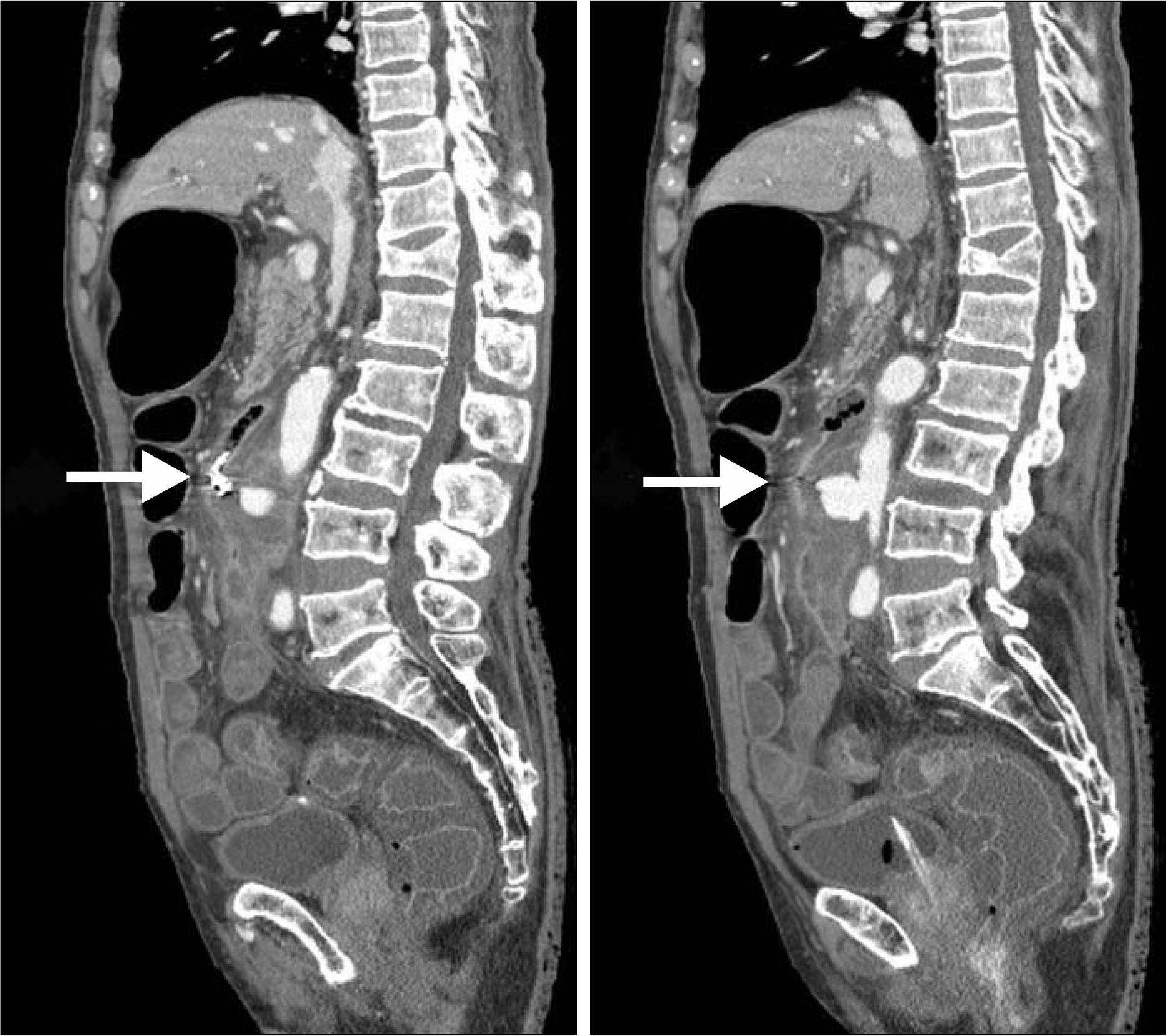Abstract
Primary aortoenteric fistula (PAEF) is a rare disease with a high mortality rate due to massive hemorrhaging and diagnostic difficulties. Although hemorrhagic regions can be identified by endoscopy, it is difficult to diagnose PAEF by this method. If PAEF is suspected, endoscopic procedure should be terminated and abdominal CT should be performed. Overlooking the herald bleeding of PAEF can lead to massive bleeding and death. An 85-year-old previously healthy male presented with a complaint of melena. Gastrointestinal endoscopy identified a hemorrhagic site in the third portion of the duodenum and endoscopic hemostasis was performed. However, during the procedure, it became apparent that the hemorrhage was probably not the result of a simple duodenal ulceration and abdominal CT was performed immediately. An aortic aneurysm connected to the duodenum was identified, confirming the diagnosis of PAEF. However, the patient died of massive hemorrhaging before an operation could be performed.
Go to : 
References
1. Lemos DW, Raffetto JD, Moore TC, Menzoian JO. Primary aortoduodenal fistula: a case report and review of the literature. J Vasc Surg. 2003; 37:686–689.

2. Lee JT, Saroyan RM, Belzberg G, Pianim NA, Bongard FS. Primary aortoenteric fistula: computed tomographic diagnosis of an atypical presentation. Ann Vasc Surg. 2001; 15:251–254.

4. Ihama Y, Miyazaki T, Fuke C, et al. An autopsy case of a primary aortoenteric fistula: a pitfall of the endoscopic diagnosis. World J Gastroenterol. 2008; 14:4701–4704.

5. Lozano FS, Muñoz-Bellvis L, San Norberto E, Garcia-Plaza A, Gonzalez-Porras JR. Primary aortoduodenal fistula: new case reports and a review of the literature. J Gastrointest Surg. 2008; 12:1561–1565.

6. Song Y, Liu Q, Shen H, Jia X, Zhang H, Qiao L. Diagnosis and management of primary aortoenteric fistulas-experience learned from eighteen patients. Surgery. 2008; 143:43–50.

7. Tozzi FL, da Silva ES, Campos F, Fagundes Neto HO, Lucon M, Lupinacci RM. Primary aortoenteric fistula related to septic aortitis. Sao Paulo Med J. 2001; 119:150–153.

8. Baril DT, Carroccio A, Ellozy SH, et al. Evolving strategies for the treatment of aortoenteric fistulas. J Vasc Surg. 2006; 44:250–257.

9. Shree D, Jeppu S, Puneet P, Rani K. Computed tomography diagnosis of a primary aortoduodenal fistula in a patient with a partially thrombosed abdominal aortic aneurysm. Jpn J Radiol. 2010; 28:534–537.

10. Mylona S, Ntai S, Pomoni M, Kokkinaki A, Lepida N, Thanos L. Aortoenteric fistula: CT findings. Abdom Imaging. 2007; 32:393–397.

Go to : 
 | Fig. 1.Endoscopic findings. (A) Fresh duodenal bleeding after blood clot removal. (B, C) Continuous bleeding after clipping of the necrotized mucous membrane. (D) Stoppage of the bleeding after fibrin glue injection. |




 PDF
PDF ePub
ePub Citation
Citation Print
Print




 XML Download
XML Download